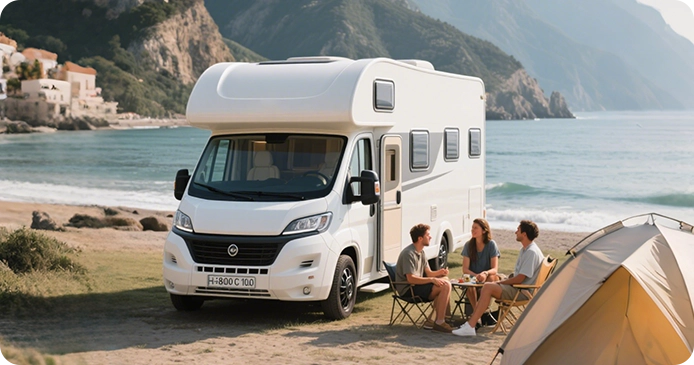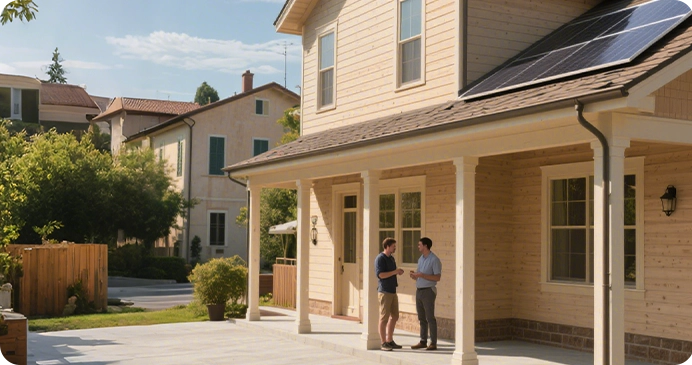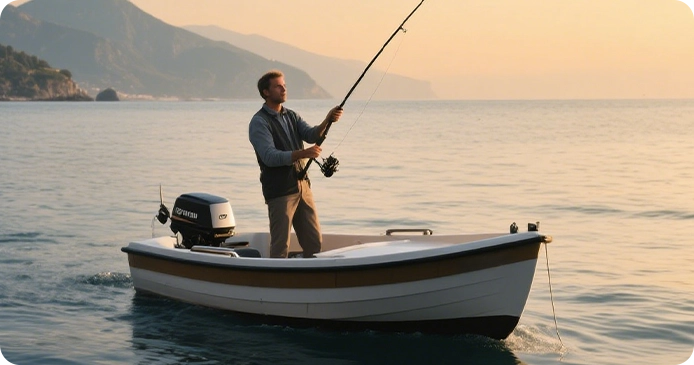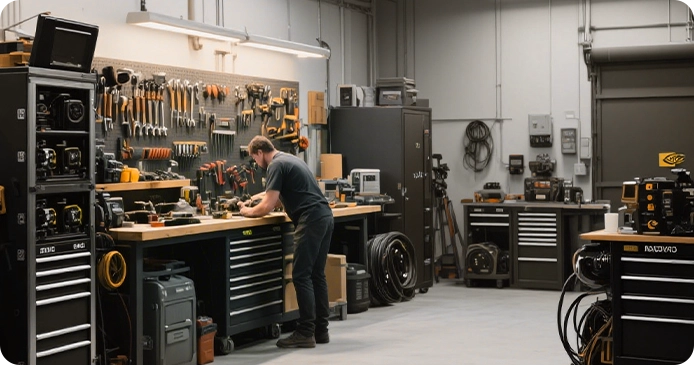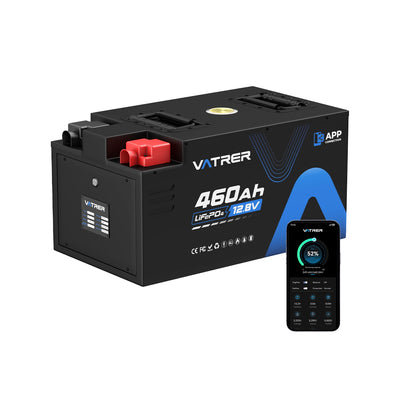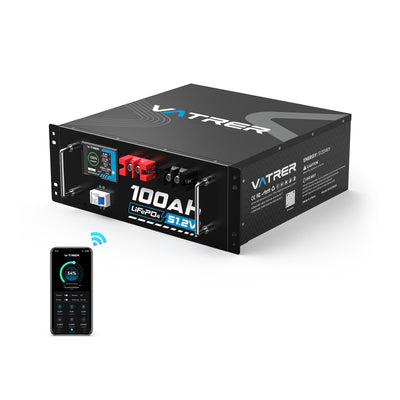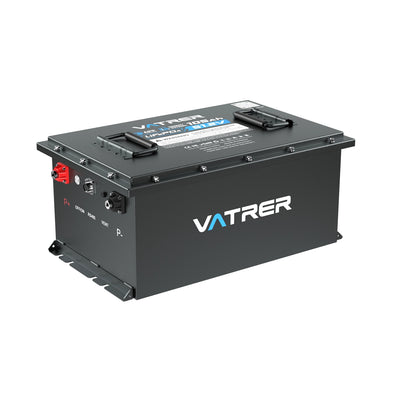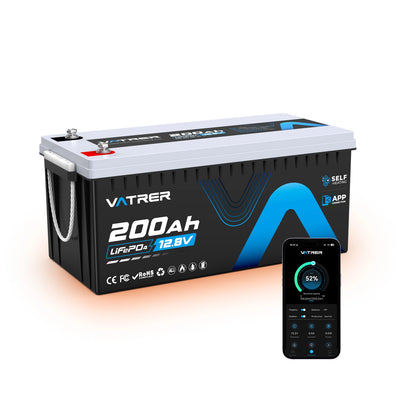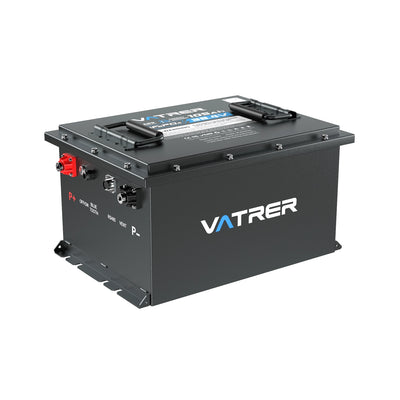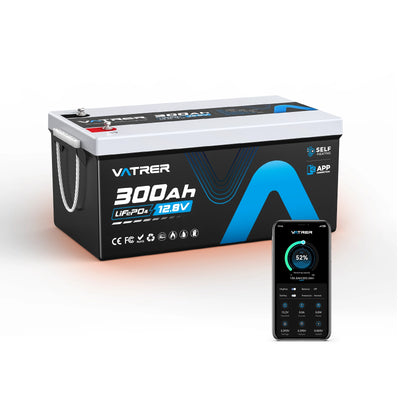Startseite
>
Erhalten Sie die neuesten Nachrichten aus der LiFePo4-Batteriebranche
>
Welche Wechselrichtergröße benötige ich im Jahr 2025 für mein Wohnmobil?
Welche Wechselrichtergröße benötige ich im Jahr 2025 für mein Wohnmobil?
von/ durch
XX
am Apr 27 2025
Reading time 5 minutes
Sie haben Probleme, Ihre Wohnmobilgeräte netzunabhängig mit Strom zu versorgen? Erfahren Sie, wie Sie die perfekte Wechselrichtergröße für Ihre Abenteuer im Jahr 2025 wählen – ganz ohne Elektrotechnik-Abschluss. Mit Praxisbeispielen und Tipps zur Solarintegration!
Sie haben Ihr Zuhause gegen vier Räder und eine schöne Aussicht eingetauscht – ein toller Schachzug! Doch jetzt starren Sie auf die Elektrik Ihres Wohnmobils, als wären es Hieroglyphen. Keine Sorge, die Ermittlung Ihres Wechselrichterbedarfs ist gar nicht so schwierig, wie es klingt. Lassen Sie uns über Wechselrichter sprechen, wie bei einem Lagerfeuer-Gespräch.
✅Inhaltsverzeichnis:
- Was ist ein Wechselrichter?
- So wählen Sie die richtige Größe für Ihren Wechselrichter
- Reine Sinuswelle vs. modifizierte Sinuswelle
- Installationstipps
- Solarmodule + Wechselrichter
- FAQs
- Beispiele aus der Praxis
- Halte es einfach
Was ist ein Wechselrichter?
Stellen Sie sich Ihren Wohnmobil-Wechselrichter als Stromübersetzer vor.
Ihre Wohnmobilbatterien und Solarmodule sprechen „DC“ (Gleichstrom), aber Ihre Geräte – wie Ihre Mikrowelle, Ihr Laptop oder diese schöne Heizdecke – verstehen nur „AC“ (Wechselstrom).
Die Aufgabe des Wechselrichters besteht darin, diese Sprachbarriere zu überbrücken. Ohne ihn sind Ihre Steckdosen nur dekorative Löcher in der Wand, wenn Sie vom Netz getrennt sind.
Aber Moment mal – was ist der Unterschied zwischen einem Wechselrichter und einem Konverter (Gleichrichter)? Gut, dass Sie fragen! Ein Konverter macht das Gegenteil: Er wandelt Wechselstrom (vom Campingplatzanschluss) in Gleichstrom um, um Ihre Batterien aufzuladen. Wechselrichter und Konverter sind wie Feinde – beide sind unverzichtbar, funktionieren aber auf unterschiedliche Weise.
Erfahren Sie mehr: Was ist ein Spannungswandler? (Und warum Sie sich dafür interessieren sollten)
Verwandtes Produkt: Vatrer 36V / 48V&72V auf 12V Golf Cart Power Buck Converter
Arten von Stromrichtern
Hier ist der Spickzettel:
| Konvertertyp | Technischer Name | Hauptfunktion | Häufige Anwendungen |
| Wechselstrom und Gleichstrom | Gleichrichter | Wechselstrom → Gleichstrom umwandeln | Telefonladegeräte, Netzteile |
| Gleichstrom-Wechselstrom | Wechselrichter | Gleichstrom → Wechselstrom umwandeln | Solarwechselrichter, USV-Backup |
| DC-DC | DC–DC-Wandler (Buck/Boost) | Stufenweise Erhöhung oder Verringerung der Spannung (nur DC) | Batteriesysteme, LED-Treiber |
| AC-AC | AC–AC-Wandler (Cyclo/Matrix) | Wechselspannung und Frequenz direkt ändern | Hochleistungs-Motorsteuerung, Netzfrequenzumwandlung |
So bestimmen Sie die Größe Ihres Wechselrichters: Kein Taschenrechner erforderlich
Kommen wir zur Praxis. Die Wahl des richtigen Wechselrichters läuft auf zwei Dinge hinaus:
- Was möchten Sie mit Strom versorgen (Ihre unverzichtbaren Geräte)?
- Wie viel können Ihre Batterien aushalten (denn niemand mag eine leere Batterie um Mitternacht)?
Hier ist Ihr Schritt-für-Schritt-Spickzettel:
Schritt 1: Erstellen Sie eine Liste mit „Machthungrigen“
Nehmen Sie ein Notizbuch zur Hand und beobachten Sie Ihre Geräte. Achten Sie auf die Wattzahl (normalerweise auf einem Aufkleber oder in der Bedienungsanleitung). Keine Wattzahl? Verwenden Sie diese Formel:
Watts = Volts × Amps
Beispiel: Auf Ihrem Crockpot steht 120 V und 5 A? Das sind 600 Watt. Ja. Sie sind jetzt Elektriker.
Schritt 2: Addieren Sie sie (aber fälschen Sie die Zahlen)
Addieren Sie die Wattzahl aller Geräte, die Sie gleichzeitig nutzen. Kaffee kochen, während Sie Netflix streamen und Ihre DJI-Drohne aufladen? Das ist eine Power-Party. Rechnen Sie jetzt noch 30 % hinzu – denn Haushaltsgeräte sind oft etwas nervig und verbrauchen beim Start manchmal mehr Strom.
Schritt 3: Passen Sie Ihre Batterie an
Ihr Wechselrichter ist nur so gut wie Ihr Batteriespeicher. Ein 2.000-W-Wechselrichter in Kombination mit einer winzigen Batterie ist wie ein Düsentriebwerk an einem Dreirad – er wird spektakulär versagen.
- Lithiumbatterien (wie unsere Vatrer RV-Serie) sind hier die MVP. Sie sind leichter, halten länger und lassen Sie nicht mitten auf einer Autofahrt im Stich.
-
Blei-Säure-Batterien? Sie sind billiger, aber sie geben nach, wenn sie unter 50 % entladen werden.
Reine Sinuswelle vs. modifizierte Sinuswelle
Nicht alle Wechselrichter sind gleich. Hier sind die Fakten:
Reine Sinus-Wechselrichter
- Vorteile: Gleichmäßiger, sauberer Strom, der Ihren Laptop oder Ihr CPAP-Gerät nicht durchbrennt. Perfekt für empfindliche Elektronik.
- Nachteile: Kostet mehr als ein Netflix-Abonnement für Ihre gesamte Großfamilie.
Modifizierte Sinus-Wechselrichter
- Vorteile: Budgetfreundlich. Funktioniert für grundlegende Dinge wie Lichter, Werkzeuge oder das Aufladen Ihrer Walkie-Talkies.
- Nachteile: Ihr Ventilator könnte wie eine Kazoo-Band summen. Vermeiden Sie die Verwendung mit medizinischen Geräten oder ausgefallenen Gadgets.
Also: Wenn Sie ein Homeoffice oder medizinische Geräte betreiben, gönnen Sie sich einen reinen Sinus. Wenn Sie nur das Licht anlassen? Sparen Sie Geld mit Modifikationen.
Installationstipps
Damit Ihre Anlage nicht abbrennt. Die Installation eines Wechselrichters ist keine Raketenwissenschaft, aber so vermeiden Sie, dass er zum abschreckenden Beispiel wird:
- Der Standort ist wichtig: Montieren Sie es an einem trockenen und belüfteten Ort. Unter dem Bett? Gut. Neben der Propangasflasche? Auf keinen Fall.
- Verkabeln wie ein Profi: Verwenden Sie dicke Kabel – dünne überhitzen schneller als Ihre Nerven, wenn jemand Ihren Campingplatz stiehlt. Googlen Sie „Drahtstärketabelle“, um dies herauszufinden.
- Testen Sie, bevor Sie sich ausruhen: Schließen Sie zuerst eine billige Lampe an. Wenn sie funktioniert, ist alles in Ordnung. Wenn nicht, überprüfen Sie Ihre Anschlüsse (oder geben Sie dem rückläufigen Merkur die Schuld).
Tipps: Fügen Sie einen Fernschalter hinzu, damit Sie den Wechselrichter ein- und ausschalten können, ohne in den Unterboden Ihres Wohnmobils kriechen zu müssen.
Solarmodule + Wechselrichter = himmlische Kombination
Solarenergie mit Ihrem Wechselrichter kombinieren? Ein kluger Schachzug. Hier sind die Gründe:
- Freie Energie: Die Sonne ist ein riesiger Batterieladegerät.
- Leise Stromversorgung: Keine lauten Generatoren, die Ihre Glamping-Nachbarn stören.
Aber … Sie benötigen:
- Genügend Solarmodule, um Ihren Strombedarf zu decken (beginnen Sie mit 200–400 Watt).
- Ein Laderegler, der Ihre Batterien vor Überladung schützt (stellen Sie sich das als eine Art Türsteher für Ihr Stromsystem vor).
FAQs
F: Kann ich meine Klimaanlage mit einem Wechselrichter betreiben?
A: Ja, aber das ist wie das Füttern eines T-Rex. Eine 13.500 BTU-Klimaanlage benötigt ca. 3.500 Watt (inkl. Anlaufstrom). Kombinieren Sie sie mit einem 4.000-W-Wechselrichter und einem Batteriespeicher, der größer ist als das Ego Ihres Ex.
F: Was ist der größte Anfängerfehler?
A: Den 30%-Puffer vergessen. „Aber mein Mixer braucht doch nur 700W!“ → Überraschung! Beim Start benötigt er 1.000W.
F: Warum piept mein Wechselrichter wie ein Rauchmelder?
A: Entweder ist es überlastet, überhitzt oder es beurteilt Ihre Lebensentscheidungen. Sehen Sie in der Bedienungsanleitung nach (und flüstern Sie ihm eine Entschuldigung zu).
Beispiele aus der Praxis: Für die „Ich brauche visuelle Elemente“-Gruppe
Wochenendkrieger
- Geräte: Laptop (60 W) + Lichterkette (20 W) + Mixer (800 W)
- Gesamt: 880 W + 30 % = 1.144 W Wechselrichter , also wählen Sie einen 1200 W Wechselrichter
- Batterie: 100 Ah Lithium (hält ca. 10 Stunden, während Sie Netflix schauen und chillen).
Vollzeit-Roadie
- Geräte: Mikrowelle (1.200 W) + Instant Pot (1.500 W) + Projektor (300 W)
- Gesamt: 3.000 W + 30 % = 3.900 W Wechselrichter , also 4.000 W Wechselrichter wählen
-
Batterie: 400 Ah Lithium + Solarmodule.
Letzter Gedanke: Halten Sie es einfach
Bei der Wahl des Wechselrichters geht es nicht um Perfektion – es geht darum, kalten Kaffee und dunkle Nächte zu vermeiden. Befolgen Sie diese Schritte, testen Sie Ihre Installation und denken Sie daran: Selbst Bear Grylls hat wahrscheinlich seine erste Wechselrichterinstallation vermasselt.
Du schaffst das. Jetzt erobere die offene Straße (und lade vielleicht nebenbei dein Telefon auf).
Teilen





























